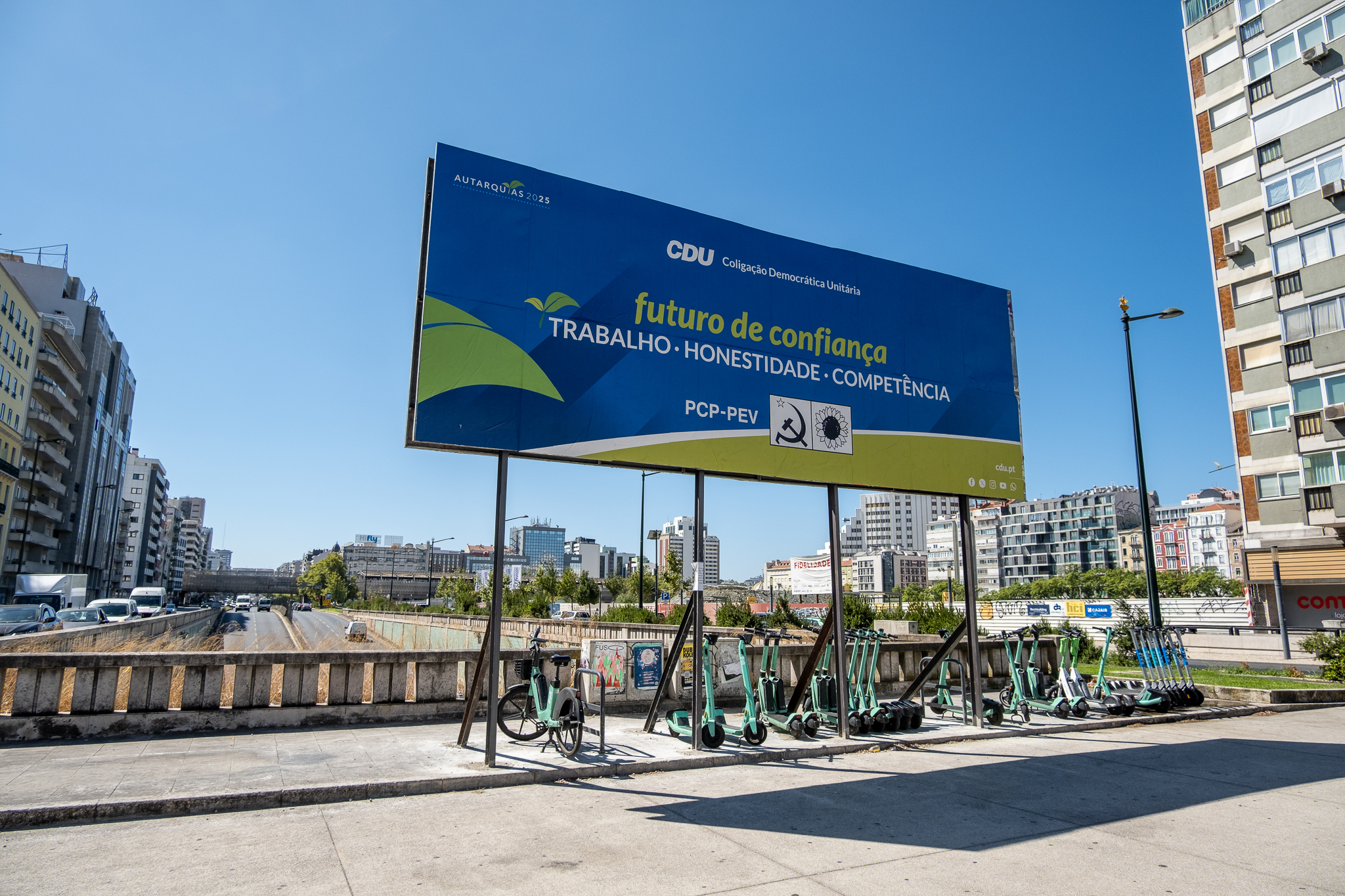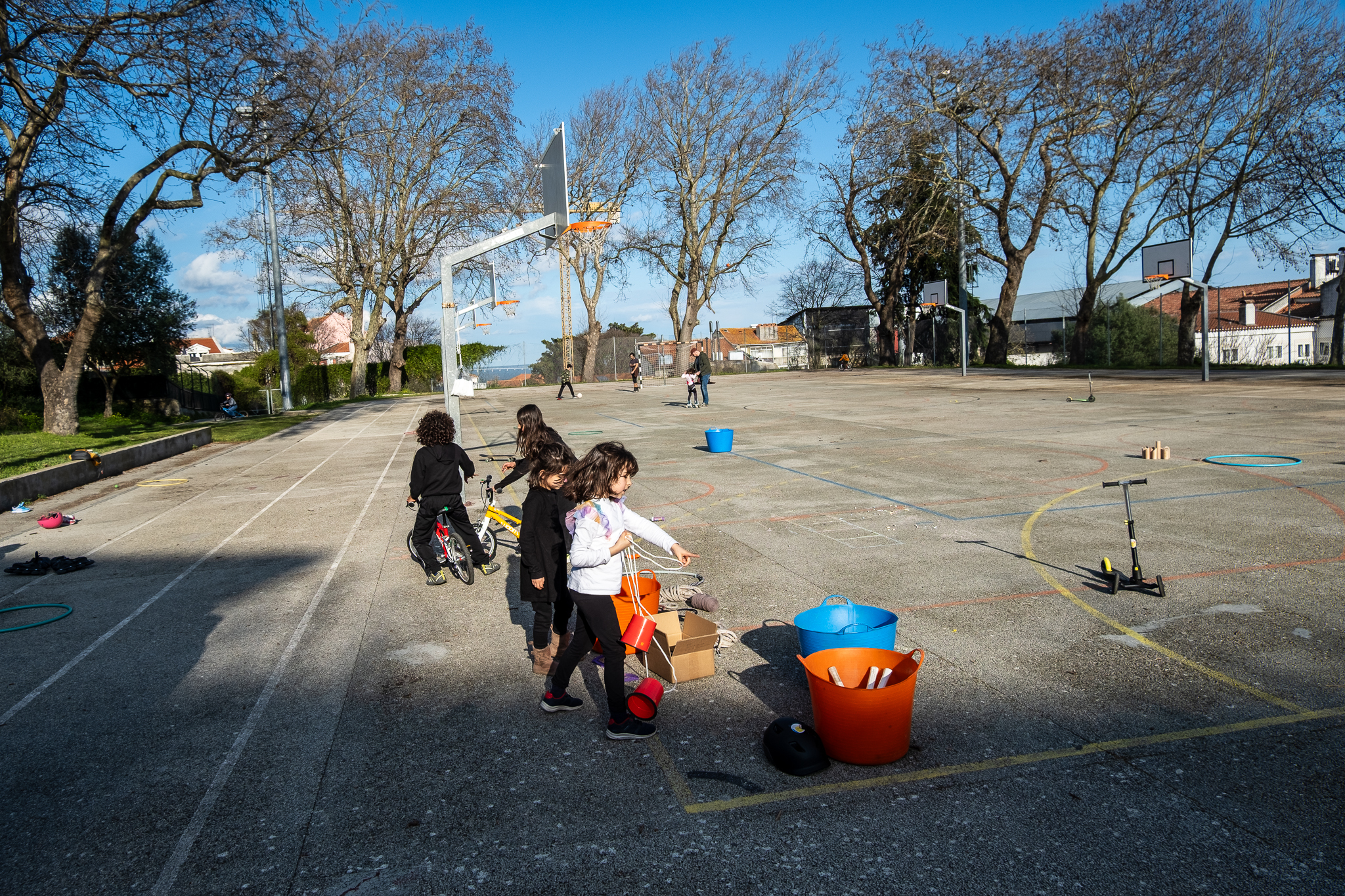The execution of Lisbon's General Drainage Plan is essential for the future of the city, despite the inconvenience that the work will bring to people's circulation on Avenida da Liberdade and Avenida Almirante Reis, and also in Santa Apolónia, Beato, Chelas, Campolide, and Santa Marta.

Avenida da Liberdade and Avenida Almirante Reis will suffer partial cuts for two years for the construction of drainage tunnels, which will collect water in the city and carry it to the river. These tunnels - which will be invisible in our day-to-day lives because they will be buried - will prevent flooding and inundation in Lisbon and are therefore essential to the functioning of the city.
On Avenida da Liberdade, the cut will be on block below Rua Alexandre Herculanoon the sides of the avenue. First, the left side, which currently has a downward direction, will be cut off; there, the construction site will occupy both the side lane and the parking area, and the central sidewalk. Only the tour will be available at the stores. Without specifying how, the Lisbon City Hall guarantees that the cycling circulation is guaranteed (Avenida da Liberdade has 30+bike lanes on the sides). The right side, which has a downhill direction, will have a smaller construction site and for less time. The work in the Avenida da Liberdade area will take place between September 2022 and May 2024.

On Avenida Almirante Reis, the cut will be more significant. It will take place in the Intendente area down the avenue, where the new bike path is planned (in the released project the construction site area is identified). The construction site will force the closure of the end of Rua Antero de Quental and its connection to Rua Almirante Reis.
Since the entire downhill side of the avenue will be cut off, traffic will be diverted to the uphill side in a shared model (30+bike). The streetcar track will also be moved to the uphill side of the avenue, avoiding interrupting the circulation of the 28, which remains two-way. Remember that the project for the new bicycle path at Almirante Reis will limit the maximum speed on the entire avenue to 30 km/h.

Rua Antero de Quental will become a resident-only parking lot in order to minimize the impact on a consolidated area of the city. A smaller construction site will also be created in Largo do Intendente, between November 2023 and April 2024, but it will not require traffic cuts, only short pedestrian detours. All in all, the work on Almirante Reis will take place between September 2022 and July 2024.
Impacts also in Santa Apolónia, Beato, Chelas, Campolide and Santa Marta
The Liberdade and Almirante Reis avenues will not be the only ones to suffer drainage interventions. They are also planned in Santa Apolónia, in Beato (between Avenida Infante Dom Henrique, Rua do Açúcar and Rua Amigos de Lisboa), in Chelas (near Picheleira), in Rua de Campolide, in the streets of Santa Marta and Barata Salgueiro. In total, there will be seven construction fronts that will inevitably have an impact on the city due to the constraints they will cause in terms of mobility, but which are necessary for the future of Lisbon.
- Rua de Campolide: between May 2022 and January 2025
- Avenida da Liberdade: between September 2022 and May 2024
- Rua de Santa Marta / Rua Barata Salgueiro: between July 2022 and June 2024
- Almirante Reis Avenue / Antero de Quental Street: between September 2022 and July 2024
- Santa Apolónia: between June 2022 and January 2025
- Chelas: between June 2022 and January 2025
- Blessed: between June 2022 and January 2025
Santa Apolónia will be one of the most complicated construction fronts and, for this reason, the contract will also be divided into four phases. In the four phases, which will take place between next June and January 2025, the pedestrian and cycling circulation is guaranteed - on Avenida Infante Dom Henrique there will be a detour thinking about bicycles, according to the Lisbon City Hall. Between each phase, different traffic detour will take place, without compromising the public transportation network in the area. The Rua do Museu da Artilharia will be closed to traffic during the entire period. As the work approaches its final stage, the road design in Santa Apolónia will look more like its final version - for this area, a green square is planned in the center of the current Avenida Infante Dom Henrique, which will find a traffic circle here. This public space work can only move forward after the drainage works.

In the Beato area, the work will affect in a first month (between June and July) only the central corridor of Avenida Infante Dom Henrique. Only in August and until March 2024 will the crossing of Rua do Açúcar and Rua Amigos de Lisboa be closed, and a narrowing of the lane on Avenida Infante Dom Henrique will be performed. The pedestrian, cycling, and road circulation is guaranteed on this avenue by the municipality, as is the public transportation network.
The invisible work
The municipality calls it "the invisible work that prepares Lisbon for the future" because, in fact, that is exactly what it is. The Lisbon General Drainage Plan (PGDL) translates as "in a set of actions that aim to protect Lisbon from floods and inundations, preparing it for the challenges of the future, associated with extreme precipitation phenomena"reads an information brochure from CML, which also explains that the Downtown Lisbon and the Algés-Alcântara axis are the main areas threatened by floods. "These phenomena have a tendency to worsen due to the increasing occupation of the territory and the effect of climate change."
The PGDL was created to control the problem at the source by building retention basins that allow rainwater to infiltrate into the ground, but also by building tunnels that serve to carry the water from the basins to the river. Retention basins have already been built in Ameixoeira (2018), Alto da Ajuda (2019), and Parque Eduardo VII (2021), and another infrastructure has been built - the PGDL is the result of an investment of about 250 million euros over 15 years (from 2016 to 2030), with about 8.4 million being executed.

The seven construction fronts that will affect the city between 2022 and 2025 will be used to build two drainage tunnels that will carry water to the river: one between Monsanto and Santa Apolónia and the other between Chelas and Beato, in an investment of more than 132.9 million Euros that will be the responsibility of the Mota Engil / SPIE Batignolles International consortium.
The two tunnels will have an internal diameter of 5.5 meters and will develop at an average depth of 30-40 meters; they will capture the water collected at two high points (Monsanto and Chelas) and at intermediate points along their route, namely Avenida da Liberdade, Santa Marta, and Avenida Almirante Reis, and lead it to the river. In this way, the water that would cause floods and inundations during rainy peaks is diverted. The Monsanto - Santa Apolónia tunnel will be about 5 km long and the Chelas - Beato tunnel will be 1 km long.
In conjunction with the tunnels, anti-pollution basins will be established to capture and store the first rainwater - the most polluted because it brings residues deposited on the sidewalk surface; the water collected by these basins will be forwarded to treatment plants for decantation treatment, that is, for "cleaning" before being delivered to the Tagus River. Plumbing will also be created to expand the city's recycled water network through drainage tunnels, so that potable water will not be used for activities such as irrigation, firefighting, and sidewalk washing.

With three fronts, this megalomaniac drainage project in the city of Lisbon will mobilize some 800 workers at its peak. The deadlines set and announced should be met, but may be subject to unforeseen events related to the geology and hydrology of the land, archaeological issues, the remediation of contaminated soil, and the national and international situation, which may interfere with the prices and availability of construction materials and labor, says the Lisbon City Council.
The municipality will soon make available all the information about the works of Lisbon's General Drainage Plan on the microsite planodrenagem.lisboa.pt. CML has been preparing information campaigns directed to municipal services and companies, to the Parish Councils, to the living forces of the city (such as authorities, schools, transport operators and associations) and to the general public.











